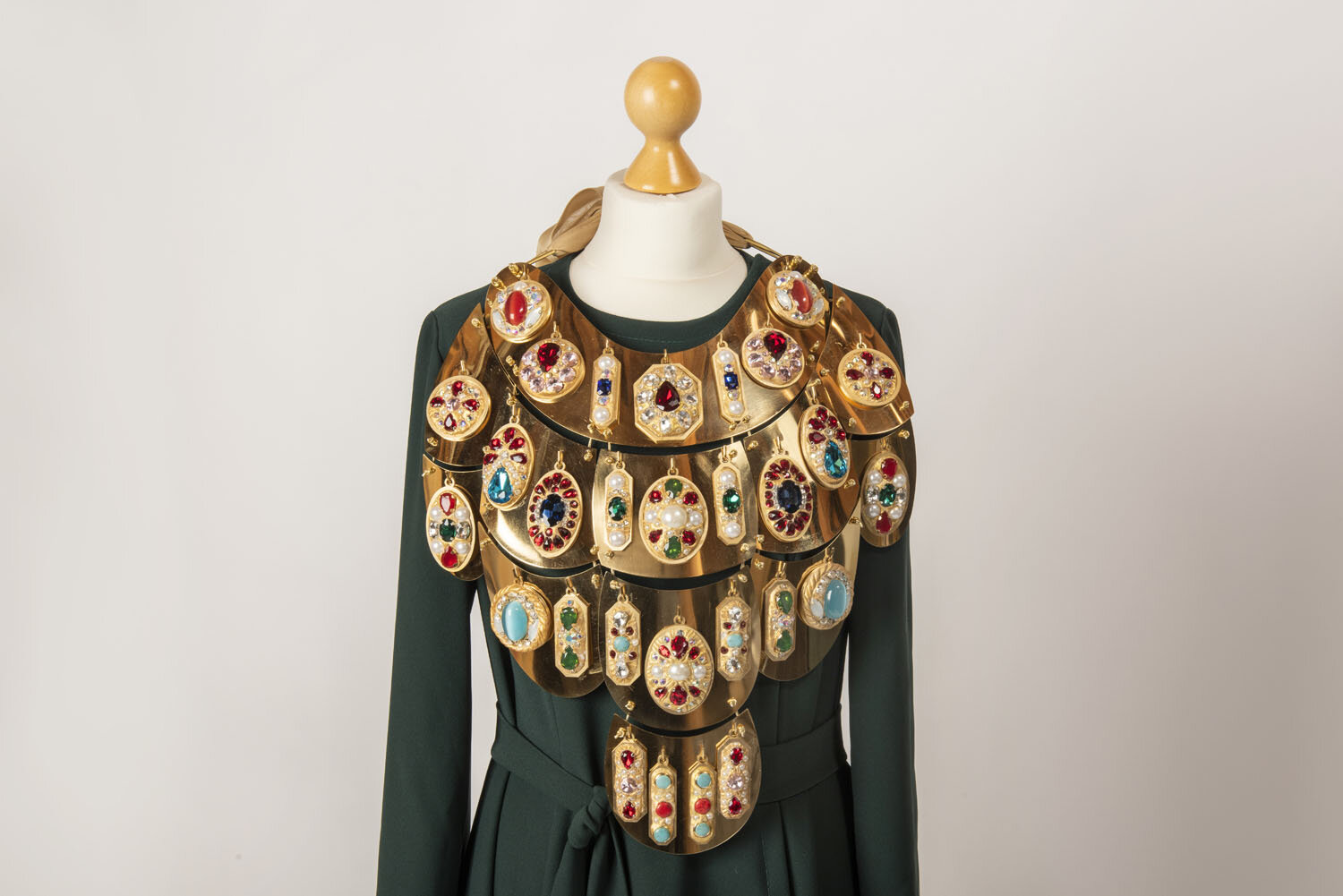Towards a new manifesto of beauty
In Luce Irigaray’s essay “How can we create our beauty” the feminist philosopher talks about the new kind of beauty feminine artistic creation should claim. “As women, we have been enclosed in an order of forms inappropriate to us. In order to exist, we must break out of these forms.” Irigaray talks about restrictions and boundaries. About the patriarchal order and the need for inventing a new identity through creation. “In destroying already coded forms women rediscover their nature, their identity, and are able to find their forms, to blossom out in accordance with what they are.”
“It still is as it always was”, Nancy Atakan’s and Kalliopi Lemos’s first joint exhibition, is an artistic dialogue about women and time. About the mythical tales that shaped woman’s image and their today re-appropriation towards a new conception of femininity. But at the same time, it is an exhibition about beauty and its signifiers.
Lemos’ installation “I’m Home” has a dramatic impact. Rooted in tradition, it could be the costume of an ancient tragedy’s heroine. The black dress, enormous and monumental, becomes a tree coming out of the earth, arising from a ground made of memories, personal stories, happiness, and pain.
The eternal woman as the carrier of family history.
Throughout history, woman is home.
Atakan, on the other hand, approaches home from another direction. Despite its bittersweet humoristic basis, the actual message takes the form of reproach. In her “Ponder series” the stereotypical narrative of the housewife is deconstructed by pondering over marriage clichés and the illusion of a “happily ever after”.
The eternal woman as the home carer.
Throughout history, woman is the housekeeper.
Both artists begin from autobiographical references to talk about the universal woman. A path they have both previously followed within their artistic practices. Atakan’s “Challenging Cliché 3” is made of a traditional American patchwork quilt that her grandmother and great aunt made as a wedding gift. The carpet in Lemos’ work, whose flowery pattern runs the whole installation, is a beloved family heirloom. By using such familiar and precious objects, the artists reveal an intimate relationship between experience and artistic narration —the roots of their art. Personal thus becomes utterly political as those two different aspects of woman reality finally meet in the central work of the show, the film “Necklace of time”. In the “rite of passage” that takes place in the film, the essential nature of woman experience is implied by the weight of the breastplate necklace jewel each of the two artists is wearing, while wandering in the forest and entering into the beautiful but desolate mansion. It is in this symbolic space of maturity where they replace the impressive gems of the necklace, by new plates, sensitively stitched with significant words: Joy, Love, and Birth; also, Betrayal, Heartbreak, and Death. And evidently, Art and Spirituality.
The beauty of a meaningful life.
An allegory is revealed here based on the apparent contrast between the sacralised virtual woman figure —mother nature, fertility goddess— that is running over history —as the jewel’s Byzantine and Ottoman patterns indicate— and the hard woman actuality; an actuality based on “heavy” stereotypes, that does not seem to have changed dramatically up to today. “It still is as it always was” raises thus a hypothetical question: Should it be still as it always was?
The element of jewellery is crucial in answering. Jewel has always been functioning as a powerful social signifier. It could represent power and wealth, religion and culture, gender and age. It talks about memory, history and mostly beauty. It carries spiritual, aesthetic and ethnic meaning. All elements of identity passing from generation to generation. At the same time and for the same reasons, it can be a talisman, guarding the body against the attacks of evil and harmful spirits —a keeper.
If the jewel is the signifier, the symbolic gesture of the replacement of gems with words/valuable experiences is the potential of a dramatic change of signifieds. This way woman stops being the psychoanalytical sign of culturally manufactured Beauty —as Griselda Pollock has prominently depicted— becoming the bearer of a new notion of subjectivity: Her new kind of beauty, concerning the abandonment of stereotypical aesthetic values towards a new universal female, existential and spiritual approach.
According to Walter Benjamin “Allegory is in the realm of thought what ruins are in the realm of things” and it is precisely this reminiscent function of multiple hermeneutics that prevails through the film encompassing the whole exhibition. As even the practice of collaboration per se can be regarded as a revolutionary feminine act of collective creation, the exhibition becomes a route towards the pure feminine aesthetics that Irigaray is demanding from woman’s art. A liberating beauty, beyond stereotypical elements and expectations, based on the inherent link between woman and nature.
Paraphrasing Schiller:
“It is only through her own Beauty that woman makes her way to Freedom”.
London 2020


